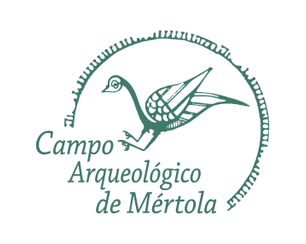Ceramics
Conservation and restauration of Archaeological Ceramics
Archaeological ceramics can make up one of the main characterizing elements of the evolution of civilization and at the same time of Mankind. The preserving and valuing of this historical document has to be linked with the existence of a good policy of preventative conservation as well as skilled human resources qualified in knowledge, capacities and attitudes. This allows the functions of any museological institution to be carried out fully in such a way to safeguard each and every heritage property. It is the Ceramic Department of Mértola’s Archaeological Site that is involved in the conservation and restoration of ceramic materials, their register and inventory and, further more, the maintenance of the objects, whether those on exhibition in the Mértola Museum or those kept in store. In any intervention we have to take into consideration the different types of ceramics, the variations in their composition, the way they were made and the different firing temperatures that will affect the degree of susceptibility of certain ceramic clays to environmental conditions. Generally speaking ceramics fired at lower temperatures deteriorate more easily.
The stages in the intervention of a ceramic object are as follows: cleaning, marking, consolidation, glueing, the filling in of gaps and the pictorial re-integration. Conservation and restoration intervention work of ceramic objects demands “endless” basic procedures. These are developed in accordance with a set of sequential steps that demand a most accurate and exhaustive register (written and photographic) of all the steps undertaken and the justification of the same. Each object should be considered a unique case, not only for its composition but essentially for its state of conservation and historical, cultural, aesthetic and artistic significance.
Being attentive to all these factors, each artefact presents its own problems and demands the definition of an adequate personalised intervention programme from the technician involved. This definition of a programme has a prior diagnosis as its basis from which the stages of intervention are defined. They vary depending on the pathologies and characteristics presented, although there are some that are common to each and every artefact.
For the total success of the intervention, it is essential to evaluate the places (laboratories, stores, museums etc) where the object may come to be deposited, being aware of conditions of temperature, relative dampness, light, contaminants, safety conditions and adequate handling.





































